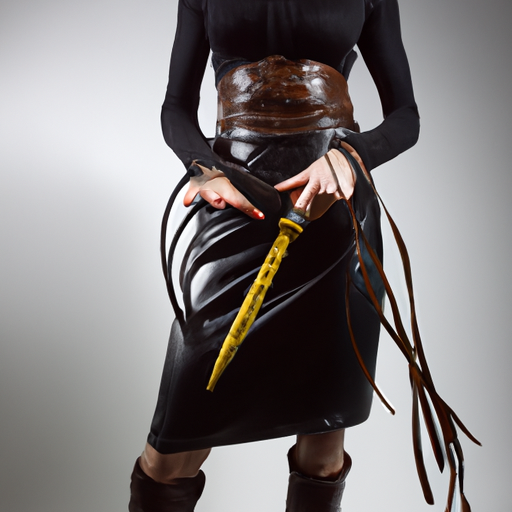
When discussing the differences between femdom boots and regular boots, there are a few key points to consider. First, we must consider the purpose of each type of boot. femdom boots are oftentimes associated with a specific kind of fetish, usually that of power exchange and dominance. As such, they have a distinct look that is designed to visually communicate that power exchange and dominance. Femdom boots typically feature an exaggerated heel and shaft, often with special features such as buckles, straps, and spiked toes.
On the other hand, regular boots are generally designed to protect the foot from the elements and to provide support and traction in outdoor activities such as walking, hiking, and even skiing. Such boots often feature a lower heel and form-fitting shaft. They may feature or lack embellishments such as buckles, but they are primarily used for their physical functional purposes.
So, the main distinction between femdom boots and regular boots is the intention behind their design. Femdom boots are aesthetic and designed primarily to communicate an idea or fantasy, while regular boots are more utilitarian and designed mainly to perform a specific physical function.
It’s important to note, however, that these differences don’t mean that the two kinds of boots cannot be worn interchangeably. For example, some people may choose to wear femdom boots to protect their feet from the elements while still maintaining their desired aesthetic. Similarly, some people may opt for a regular boot to add a certain level of dominance to their ensemble.
In the end, whether an individual chooses to wear femdom boots or regular boots is a matter of personal preference and style. Ultimately, it’s up to the person in question to decide which style best suits their individual needs and tastes. Original source.
How has Asian Femdom been portrayed in popular culture?

The portrayals of asian femdom in popular culture have been varied and complex. As an identity expression of domination, asian femdom shares a lot of commonalities with other dominatrix, yet also uniquely possesses its own unique cultural connotations.
Firstly, Asian Femdom is heavily tied to history. It has existed since the late 19th century when Japan opened its borders to access imported culture from Western nations such as Germany and France. Japan’s kimono culture of the Meiji period (in which women’s kimono were ornamented with Western designs) helped set the foundation for a newfound acceptance and appreciation for fashion, makeup, and ultimately, the adoption of modern Femdom practices. In the first half of the 20th century, Asian Femdom proliferated in the Japanese underground and in nightclubs as performers wore fetishish attire and leather boots. This subcultural movement reflected new-found freedoms for women who previously were restricted to limited roles within traditional Japanese society.
In the early 21st century, Asian Femdom began gaining a wider mainstream attention due to the emergence of Japanese-style bondage (Shibari) and hentai manga, which both tend to feature submissive female characters being put in bondage and submitting to dire and extreme situations. In certain cases, the portrayal of Asian Femdom in hentai manga has been depicted in a way that is unrealistic and exaggerated, leading to the perpetuation of negative stereotypes and assumptions about Asian Femdom as being something perverse and immoral.
However, over the past few decades, there have been great strides made in pop culture to more realistically depict Femdom and BDSM practices from an Asian perspective. For instance, the 2018 Netflix series “Kinky Boots revolves around a Japanese-American Femdom performer and the obstacles faced while reopening a family-run kinky shoe business. This show provides viewers with a nuanced look into the struggles one can face while operating confidently within the Femdom community.
Additionally, many books, movies, and television shows are increasingly featuring complex Asian Femdom characters. One example is the 2020 movie “Honey, which stars South Korean actress Park So-yun as a seductive and capricious Femdom. Other examples of Asian Femdom in popular culture include the recent video game “Yakuza 0, where players can take part in various sadomasochistic sub-storylines, and “Lip Service, a TV series about a group of Asian women living in Tokyo who explore different subcultural identities and alternative relationships.
Overall, the portrayals of Asian Femdom in popular culture have come a long way in recent years. Whereas in the past Femdom practices were often portrayed as something pathological or shameful, now they are increasingly accepted as a valid lifestyle choice that can be explored as a consensual practice between partners. As the acceptance for different lifestyles continues to grow, it is likely that we will see more nuanced and positive depictions of Asian Femdom in the future.